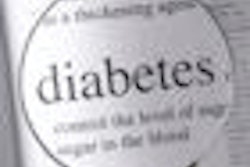Recognizing that the number of people being diagnosed with cancer linked to the human papillomavirus (HPV) is on the rise, the National Cancer Institute (NCI) has issued a detailed response to three of the most commonly asked questions about HPV-related cancers.
In 2009, more than 30,000 people in the U.S. learned they had cancer linked to HPV, according to the most recent National Report on the Status of Cancer (Journal of the National Cancer Institute, January 7, 2013). The virus is best known for causing cervical cancer, but it's also the culprit behind many cancers of the oral cavity, throat, anus, and genitals.
Unlike many forms of cancer, scientists have figured out how to dodge HPV-triggered cancers, according to the NCI: by HPV vaccination. Vaccination against HPV thwarts the spread of the virus, wrecking its ability to jump between people. Wiping out HPV could mean shutting down a big source of cancer cases -- more than 3% of all diagnoses nationwide, according to the NCI.
What is HPV?
HPV is a family of more than 150 viruses that infect human skin and mucosa, the moist membranes lining the nostrils, mouth, and genital cavities. Scientists name each type of virus with a number, in order of the viruses' discovery. Many types are harmless, some cause warts on the hands or feet, and others make fleshy bumps sprout on the genitals.
HPV infection is common, according to the NCI: More than one-half of all women between the ages of 14 and 59 catch a genital HPV. Though some "low-risk" types trigger skin growths, they don't lead to the unchecked growth typical of cancer. A handful of HPVs, however, do.
Like their less-dangerous relatives, "high-risk" types slip into people's bodies through tiny tears in the body's mucosa. Normally, the body sweeps out HPV, but when high-risk HPVs stick around, they can cause cancer. They set up shop in the moist membranes of the anus, genitals, and oral cavity, shedding new viral spawn as old cells slough off. New viruses hide in these flakes of dead cells and can move from body part to body part or from person to person.
Human cells infected with high-risk HPVs have trouble stopping mistakes made in new cells, and mistakes in infected mucosa can drive a cell toward cancer, the NCI explained.
Rates of HPV-linked cancers have been creeping up. Nearly 13,000 new cases of oral and oropharynx cancer were reported in 2009, the vast majority in men, according to the NCI.
How does the HPV vaccine work?
In 2006, the U.S. Food and Drug Administration (FDA) approved a vaccine for HPV in girls and young women. The vaccine, Gardasil, is a series of three shots spaced over six months. The injections protect against infection by four types of HPV: types 16 and 18 -- the two responsible for most cervical, anal, genital, and oropharynx cancers -- and types 6 and 11, two that trigger most genital warts. Three years later, the FDA approved the vaccine for use in boys and young men. In 2009, the FDA also approved a second vaccine, Cervarix, aimed at types 16 and 18.
Both vaccines prevent people from getting HPV infections by helping the body stockpile a medley of cellular defenses. Because the vaccines mimic HPV's shell, they can show the body what to look for without exposing it to harmful viral genes.
How effective is the HPV vaccine?
In clinical trials, both vaccines blocked infection by HPV-16 and HPV-18, and prevented almost 100% of cervical lesions. Blocking infection by type 16 and 18 may stave off other cancers, too, according to the NCI. These high-risk viruses cause nearly all anal, oropharyngeal, and genital cancers that are HPV-positive.
In 2010, fewer than one in three U.S. teenage girls had received the full three-dose series. The numbers are even more modest for teenage boys. Series completion rates were especially low for Hispanic girls, poor girls, and girls without private insurance. Southern states tended to fare poorly as well. Only 20% of girls in Alabama and Mississippi received three doses of the HPV vaccine, compared to 55% in Rhode Island and 47% in Massachusetts.
Researchers have shown that even two doses may help safeguard against HPV, according to the NCI. Now scientists are working to make a single vaccine that blocks infection by all HPV types. Today's vaccines, however, can prevent infection by two of the most common high-risk HPVs and may be the first step toward preventing HPV-linked cancers, the NCI concluded.



















